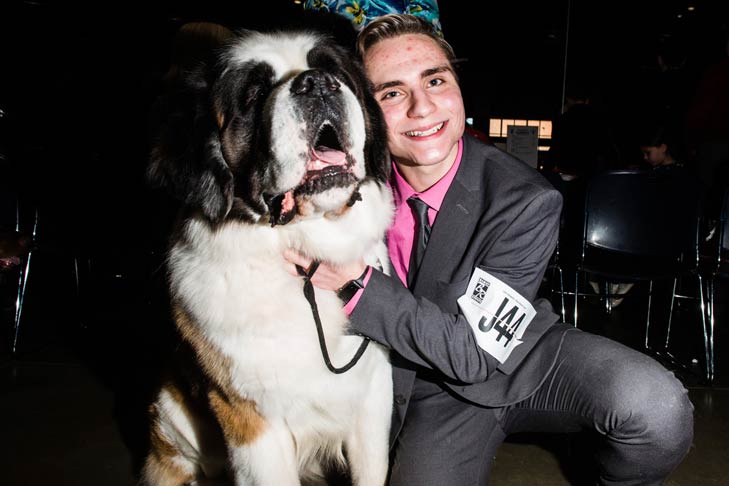
Picture Perfect: Beauty and Utility in Canine Imagery
This month I was going to write about an all-time canine tearjerker, “Lassie Come Home.” To refresh my memory, I cued up the 1943 classic and settled in with my notebook and some peanut M&Ms. And then I got sidetracked before the movie even began.
The screen filled with MGM’s famous logo: A roaring Leo the Lion beneath the legend Ars gratia artis (Art for art’s sake). As a degenerate movie addict, I’ve seen that Latin motto thousands of times—but this time I was struck by it. Those three little words really pack a wallop, don’t they? They free the artistic imagination, and they assure us that beauty can be its own reward. That a beautiful thing can be admired apart from any practical function is something of what it means to be civilized.
And, yes, a stunning full-coated Lassie framed by the garish greens and blues of a Technicolor dreamscape can be seen as the epitome of art for art’s sake. A bit kitschy for some tastes perhaps, but undeniably compelling. Serious dog people are just as susceptible as general audiences to the visceral tug of such imagery. But, for them, Lassie movies also have a practical use: They help fix the look of a good Collie at mid-20th century.
The AKC art collection contains dozens of similar dual-purpose icons—pictures and sculptures that are both lovely and illuminating. The collection is a visual history of the sport of dogs, preserving the likenesses of great ring champions rendered with painstaking accuracy. For many fanciers a painting by Muss-Arnolt or Megargee is a documentary look at their breed’s past, and perhaps its future.
If not the best example, certainly the biggest, is Maud Earl’s 1896 “I Hear a Voice.” The mammoth 48-by-60-inch canvas depicts Frandley Stephanie, a champion Saint Bernard of distinguished pedigree. The British-bred Stephanie was hailed as a superior specimen of her breed in an era when Saints were too often lumbering behemoths.
“If breeders keep before them, as illustrations of the type of what a Rough St. Bernard should be like, such exhibits of Frandley Stephanie,” an 1890s show judge wrote, “they will soon bring St. Bernards back to the position they once held in public estimation.”
Stephanie is portrayed as an Alpine rescue dog, proud and alert, listening for the distant cries of a traveler stranded on a treacherous mountain trail. This is a bit of role-playing. As an English show dog, it’s doubtful Stephanie ever came within 700 miles of an Alp. But Earl’s portrait remains a valuable artifact—and not only for its majestic beauty. It sets a definite idea of what a well-bred Saint should look like, and it reminds us of the breed’s original job description, forged in the snowy St. Bernard Pass of the mid-1600s.
To succeed in dogs one must have a mental snapshot of the ideal, and pup-culture iconography—whether a Lassie movie or a Maud Earl masterpiece—has helped to form these templates of perfection.

